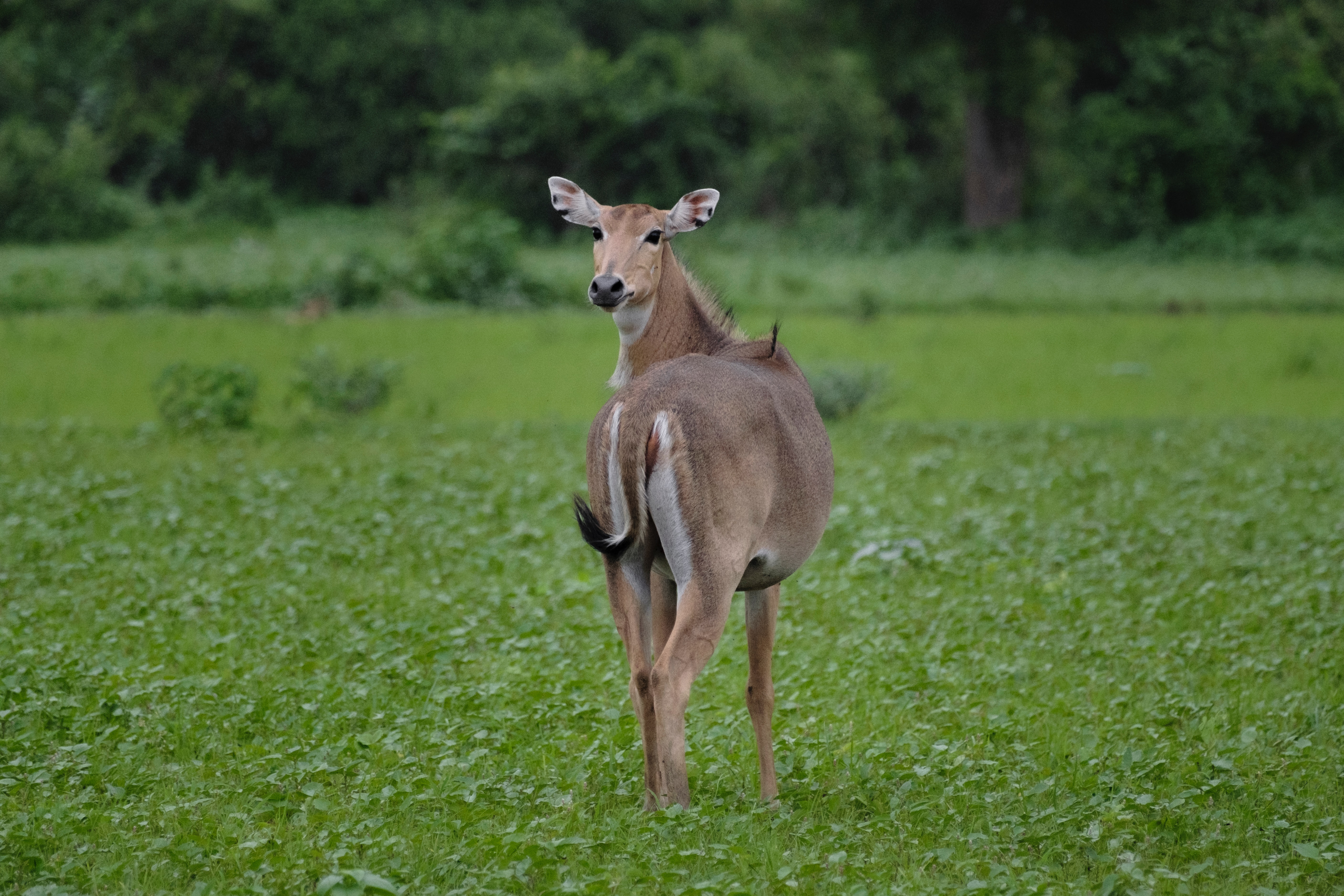Hunted for its scales and its meat, the population of the pangolins across South Asia is endangered by a massive trade in animal parts supplying the appetite for Chinese traditional medicine.

They were pangolin scales, part of the world’s largest wildlife trafficking racket. Pangolins, or scaly anteaters, are the most trafficked wildlife species globally. The scales are used in Chinese traditional medicine, though they have no proven therapeutic value. They are made of keratin, the same as human nails. Chewing your fingernails would have the same effect, but the demand shows no sign of going down.

M Monirul H Khan, professor of zoology at Dhaka’s Jahangirnagar University, says superstitions about pangolins lead to them being used for traditional medicines, but there is no scientific evidence that these medicines are useful to humans.
Due to these beliefs, indigenous peoples in India’s Chhattisgarh, Andhra Pradesh and Tamil Nadu states have traditionally hunted the pangolin, but only on special days, so the number hunted was small.
No longer. Using the weight of pangolin scales seized while they were being smuggled to China – either directly, or via Myanmar or Nepal – a TRAFFIC study has estimated that 5,772 pangolins were killed illegally in India over the period 2009-2017. However, this is likely to be a gross underestimate. Global policing agency Interpol goes by the rule of thumb that only 5% of contraband smuggled across international borders is detected.
TRAFFIC is a joint programme of the World Wildlife Fund (WWF) and the International Union for Conservation of Nature (IUCN), and acts as a wildlife trade monitoring network,.
There is no estimate of the pangolin population in India. Of the eight species found worldwide (four each in Asia and Africa), two are found in India: the Indian Pangolin (Manis crassicaudata) and the Chinese Pangolin (Manis pentadactyla). The Indian Pangolin is found throughout the country south of the Himalayas, excluding the north-eastern region, while the Chinese Pangolin ranges through Assam and the eastern Himalayas.
Pangolins are the only mammals with large keratin scales covering their skin. They are toothless, nocturnal, live in burrows and feed mainly on ants and termites. Female pangolins keep their young in burrows until they are old enough to ride on their mother’s tail. When threatened, they curl up into a tight ball. Pangolins consume up to 20,000 ants per day. That’s about 70 million ants per year. They are slow breeders, producing only 1-3 offspring every two years.

Both the Indian Pangolin and the Chinese Pangolin are listed in Schedule I of the Wildlife (Protection) Act, 1972. This means that hunting, trade or any other form of utilisation of the species or their body parts and derivatives is banned. International trade in pangolin and their body parts and derivatives is prohibited since all pangolin species are now listed in the Convention on International Trade in Endangered Species of Wild Fauna and Flora (CITES) Appendix I.
Despite the laws, pangolins are netted, trapped or snared, mainly for the Chinese market, and some for Southeast Asia. TRAFFIC reached its estimate of the number of pangolins definitely killed mostly from the seized scales, assuming that each scale weighs 10 grams, and an average pangolin weighs one kilogram. The researchers looked at 90 pangolin seizure cases recorded between 2009 and 2017. Of them, 83 were of pangolin scales, while the rest were of pangolin meat, live pangolins, a dead pangolin and a specimen for taxidermy.
Saket Badola, Head of TRAFFIC in India says that from 2009 to 2013, the majority of the 46 seizures that took place were from eastern or north-eastern parts of India. But in 2014-2017, the majority of 44 seizures that took place were from southern and central parts of India including Karnataka, Madhya Pradesh, Odisha and Tamil Nadu. The state of Manipur in north-eastern India has the unfortunate distinction of being the state with largest number of seizures – 32 – since 2009.
“Without accurate population estimates, the impact of such trade on India’s pangolin population is unclear,” Badola says. The trend of global trade data indicates that the trade of Asian Pangolins is decreasing internationally while that of Africa pangolins is on rise. This may be an indicator of declining Asian Pangolin population throughout their ranges, and hence needs to be investigated further.
Considering the high level of demand in our close proximity like in China and the Southeast Asia, precautionary measures must be put in place to safeguard India’s remaining wild populations. More effective law enforcement remains paramount.”

A more ambitious project would be to carry out a population census of pangolins in India as well as raise awareness among local communities of the ecological role played by pangolins.
The challenge in Pakistan, Nepal and Bangladesh
While India is definitely one of the major sources of pangolin trafficking, it is by no means alone. There were recent seizures of Pangolins in Nepal. In 2018, two Chinese were arrested after they were caught with 162 kg of pangolin scales, reportedly brought from Africa.
Like India, Nepal also has two species of pangolins – the Chinese and the Indian. There is no precise estimate of numbers as no nationwide survey has been carried out. Nepal does have a pangolin conservation action plan, begun in 2018 and slated to run until 2022.
Poaching and trafficking pose a growing challenge to pangolin conservation in the country. Nepal acts as both a source country and as a transitional hub for pangolin parts and their derivatives. Well-established channels through Nepal to Tibet deliver pangolins to China, the Middle East and Southeast Asian markets. However, there has been relatively little effort to systematically study patterns or trends in pangolin trade through Nepal.
According to Kumar Paudel, a researcher on pangolins in Nepal, in 2013 there were 325 kg of pangolin scale seizures on the Araniko highway that links Kathmandu and Tibet. He assumes that it takes about four pangolins to make one kg of scales, which means about 1,300 pangolins must have been killed in 2013 alone. “The price of pangolin [scale] is about USD 50 per kg at the hunter’s house but the price doubles every time it reaches the next buyer. So by the time it reaches the market, it exceeds USD 500 per kg,” said Paudel.
In Bangladesh, pangolins have been declared as a protected animal under the Wildlife Act of 1974. The animals are found in deep forests in Sylhet, Sundarbans and Chittagong Hill Tracts.
Bangladesh used to have three species of pangolins. But they have been poached and trafficked to such an extent that only one species remains – the Chinese pangolin, said IUCN’s wildlife expert Shimanton Dipu. “It is one of the most trafficked animals in Bangladesh,” he added, though there is no record of any seizure by the authorities.
| Number of pangolin seizure incidents that occurred in each country across international pangolin trafficking incidents in 2010-2015, with relative percentage of role of each country as either an origin, transit or destination in the international trafficking routes | ||||
| Country | No. of seizures | Percentage | ||
| Destination | Origin | Transit | ||
| United States of America | 127 | 100 | 0 | 0 |
| China | 113 | 73.4 | 25.7 | 0.9 |
| Germany | 37 | 13.2 | 0 | 86.9 |
| Vietnam | 35 | 31.1 | 56.7 | 12.2 |
| Thailand | 32 | 26.8 | 41.1 | 32.1 |
| Belgium | 30 | 16.1 | 0 | 83.9 |
| Malaysia | 24 | 30 | 60 | 10 |
| Netherlands | 24 | 92.3 | 0 | 7.7 |
| India | 23 | 6.7 | 93.3 | 0 |
| Indonesia | 21 | 2.5 | 97.5 | 0 |
| France | 14 | 40 | 6.7 | 53.3 |
| Nepal | 11 | 10.5 | 63.2 | 26.3 |
| Hong Kong | 8 | 26.3 | 64.9 | 8.8 |
| Switzerland | 8 | 100 | 0 | 0 |
| Cameroon | 3 | 0 | 100 | 0 |
| Malta | 3 | 100 | 0 | 0 |
| Philippines | 3 | 18.2 | 81.8 | 0 |
| Uganda | 3 | 0 | 67 | 33 |
| Poland | 2 | 100 | 0 | 0 |
| Sri Lanka | 2 | 0 | 100 | 0 |
| Zimbabwe | 2 | 100 | 0 | 0 |
| Japan | 1 | 100 | 0 | 0 |
| Kenya | 1 | 0 | 71.4 | 28.6 |
| Laos | 1 | 25 | 31.8 | 43.2 |
| Mali | 1 | 100 | 0 | 0 |
| Mozambique | 1 | 0 | 100 | 0 |
| Pakistan | 1 | 0 | 100 | 0 |
| Singapore | 1 | 50 | 16.7 | 33.3 |
| South Africa | 1 | 0 | 66.7 | 33.3 |
| Sweden | 1 | 100 | 0 | 0 |
| Taiwan | 1 | 33.3 | 66.7 | 0 |
| Tanzania | 1 | 0 | 100 | 0 |
| Togo | 1 | 0 | 100 | 0 |
| United Kingdom | 1 | 100 | 0 | 0 |
| Zambia | 1 | 100 | 0 | 0 |
Looking at the global trafficking of pangolins between 2010 and 2015, TRAFFIC researchers Sarah Heinrich, Talia A. Wittman, Joshua V. Ross, Chris R. Shepherd, Daniel W.S. Challender and Phillip Cassey wrote in a December 2017 report, “Countries that most need to enhance their law enforcement efforts are those with low numbers of seizures, but at the same time implicated in the routes of many trafficking incidents. According to the presented data, this discrepancy is most notable in (descending order of importance): Lao PDR, Nigeria, Myanmar, Cameroon, Guinea, Mexico, the Philippines, Pakistan, Liberia, Equatorial Guinea, Cote d’Ivoire, Ethiopia, Kenya, Singapore, Mozambique, and Togo.”
The researchers also said, “Law enforcement agencies in all countries involved in pangolin trafficking should employ intelligence-led investigations to examine, identify, and prosecute all parties involved in the pangolin trade that violates national laws, from collectors and traders, to logistics companies and importers, as well as the vendors, purchasers and users of pangolin parts and products. These efforts would be particularly useful in countries and territories that have been involved in large-quantity shipments identified here namely: Cameroon, China, Guinea, Hong Kong SAR, India, Indonesia, Kenya, Lao PDR, Malaysia, Myanmar, the Netherlands, Nigeria, Pakistan, the Philippines, Sierra Leone, Singapore, Thailand, Uganda, the US, and Vietnam. Several European countries, especially, Germany, France, and Belgium are also implicated as they have been identified as important transit hubs, especially for African pangolins. Furthermore, analysis of the type of product, and the quantities seized, may be useful in determining the type of criminal activities and/or networks behind the shipments, and the enforcement response required.”
The transnational network of illegal pangolin trafficking is highly mobile with new trade routes emerging every year. Enforcement approaches will need to be equally dynamic and responsive, similar to the methods that are being used to combat the trafficking of ivory, rhino horns or tiger parts. And clearly, there is a case for more awareness in China, the predominant market for all these products.
The article first appeared on The Third Pole. Read the original article.
























